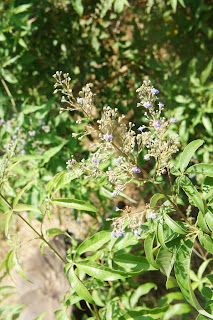 |
| Primeval Makiling |
 |
| Against the backdrop of lush greens |
 |
| Metchie on a fallen tree |
It was something too good to pass on. I heard form Ron Achacoso that
Rafflesia flowered in Mt. Makiling last week. The flower lasts a few days so we took our chances and made the trip up the popular mountain. They said it is easy to see provided the plant was still in bloom.
Rafflesia is in the botany limelight as the genus of the biggest single flower. The Makiling Rafflesia might not be the biggest, but to see a species in bloom is quite a rare experience. The makiling Rafflesia might be R. manilensis. Together with a few more friends, Noel, Ernie and Metchie, we set on our own journey to find one still in bloom.
 |
| The Makiling Rafflesia |
 |
| Ernie who found the fresh bloom |
 |
| Metchie trying to smell the stinker |
We followed the forest ranger's instructions going up the trail but warned us to have a keen eye. We walked a couple of hours before we reached an area where we could already see a proliferation of the
Tetrastigma vine,
Rafflesia's plant host. A few minutes more, Noel and Ron spotted the first bloom, but already black and discarded. There were a few buds, pending to open in a few days. But we still have to find one in full bloom and in dazzling red color.
 |
| Old flower |
 |
| Ron and Noel checking out the specimen |
It was Ernie who spotted the still bright red
Rafflesia flower, hidden in between the vine sprays and the leaf litter. It was on a steep slope, partly obscured from plain view by debris and the Tetrastigma branches. We can't resist taking souvenir photos to commemorate the occasion. I took numerous shots of the elusive plant celebrity, as many as I could.
The Makiling Rafflesia is about the size of a small plate. Metchie wanted to know if it had the reputed putrid stink and drew her nose close to the open bloom. She regretted it. She said the scent could compare to raw shrimp paste or bagoong, fresh from the market. I just took he word for it.
After a few more minutes of observing the Rafflesia and the surrounding flora, we went down the mountain trail with large smiles and the precious memory of personally encountering the largest stink flower of Makiling. We hope that we get to find it again when we climb the mountain in many years to come.



































